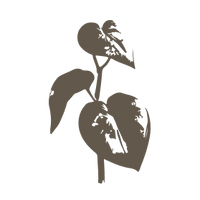How we unwind and connect has evolved.
Experience the non-alc drink you’ll actually feel.


An ancient social drink from the Pacific Islands, crafted over 3,000 years and now reimagined for your modern relaxation ritual.
Relieves anxiety and calms the mind, creating space for stillness.
Soothes physical tension, restoring nervous system activation.
Invites a deep state of presence and ease.
-
 Kava
KavaThe Effect: Eases anxiety, relaxes muscles, enhances clarity, and deepens calm - the more you drink, the richer the bliss. Yeah, it's that good. Read more here.
The History: Rooted in 3,000 years of South Pacific tradition, Kava (Piper Methysticum) has been cherished in ceremonies and social gatherings—fostering connection, harmony, and a deep sense of peace.
-
 L-Theanine
L-TheanineThe Effect: Amino acid that stimulates alpha brain waves and other neurotransmitters to promote relaxation and improvements in focused attention.
The History: Found in green tea and used in East Asia for meditation, relaxation, and sustained focus in Zen and Buddhist traditions.
-
 Coconut Water
Coconut WaterThe Effect: Nature’s natural source of electrolytes, containing potassium, sodium, and magnesium—supporting hydration balance.
History: A tropical staple, now a globally preferred hydration drink for its electrolytes and refreshing taste. -
 Monk Fruit
Monk FruitThe Effect: A naturally sweet, antioxidant-rich superfruit with anti-inflammatory benefits—zero sugar, zero calories, zero glycemic impact.
The History: A melon native to southern China, used in Traditional Chinese Medicine for its cooling and anti-inflammatory effect.

The Effect: Eases anxiety, relaxes muscles, enhances clarity, and deepens calm - the more you drink, the richer the bliss. Yeah, it's that good. Read more here.
The History: Rooted in 3,000 years of South Pacific tradition, Kava (Piper Methysticum) has been cherished in ceremonies and social gatherings—fostering connection, harmony, and a deep sense of peace.

The Effect: Amino acid that stimulates alpha brain waves and other neurotransmitters to promote relaxation and improvements in focused attention.
The History: Found in green tea and used in East Asia for meditation, relaxation, and sustained focus in Zen and Buddhist traditions.

The Effect: Nature’s natural source of electrolytes, containing potassium, sodium, and magnesium—supporting hydration balance.
History: A tropical staple, now a globally preferred hydration drink for its electrolytes and refreshing taste.

The Effect: A naturally sweet, antioxidant-rich superfruit with anti-inflammatory benefits—zero sugar, zero calories, zero glycemic impact.
The History: A melon native to southern China, used in Traditional Chinese Medicine for its cooling and anti-inflammatory effect.
verb amuse /əˈmo͞oz/
to intrigue, entertain, spark curiosity
noun a muse /ā myo͞oz/
the source of inspiration for creation
Kava is a traditional drink from the South Pacific Islands made from the root of the Piper Methysticum (kava) plant. Used for over 3,000 years in ceremonies, social gatherings and relaxation rituals, it’s known for its deeply calming effects. Kava’s active compounds, Kavalactones, naturally enhance GABA receptor activity, easing anxiety, relaxing the nervous system, and guiding you into a beautiful state of presence and ease—all without intoxication or impairing mental clarity.
Calming GABA activation: Kava’s active compounds (kavalactones) boost the activity of GABA, the brain’s primary calming neurotransmitter. By enhancing GABA’s effects, kava helps quiet down nerve signals that cause stress and anxiety (pmc.ncbi.nlm.nih.gov).
Positive mood support via dopamine: Kava also has a gentle effect on dopamine, a neurotransmitter linked to mood and reward. By subtly modulating dopamine pathways, kava can uplift your mood and create a mild sense of euphoria or contentment without overstimulation (pubmed.ncbi.nlm.nih.gov).
Relaxation without impairment: One of kava’s advantages is that it helps you unwind without clouding your mind or causing dependence. Unlike alcohol or heavy sedatives, kava promotes calmness without making you drowsy or impairing mental sharpness. In other words, you stay relaxed yet alert – perfect for social or daytime use where you want to feel good but functional (restorativemedicine.org).
Starting with a tingly buzz on your tongue, you’ll feel a warm and floating sensation. Within 10 minutes, a wave of serene clarity sets in—releasing muscle tension, quieting the mind, and unlocking deep calm. Overthinking fades into peaceful stillness.
Kava invites you to slow down, fitting somewhere between the social warmth of wine and the calming energy of tea. Enjoyed solo or in conversation, the best experience comes in spaces where you can relax — pairing perfectly with fresh air, candlelight, good company, or your favorite book.
Best Settings for Kava:
- Social Gatherings – A great alternative to alcohol for a laid-back, connected vibe.
- After Work or to De-Stress – Helps you unwind without fogging your mind.
- Creative or Reflective Moments – Pairs well with journaling, music, or deep conversations.
- Evening Wind-Down – A natural way to ease into a relaxed state before bed.
Kava isn’t a stimulant, so it’s not ideal for high-energy activities. Instead, it’s perfect for chilling out, enjoying good company, or simply giving yourself a moment to breathe.
This statement has not been evaluated by the Food and Drug Administration. This product is not intended to diagnose, treat, cure, or prevent any disease.
Caution: Not for use by persons under 18 years of age, or by pregnant or breastfeeding women. Do not combine with alcohol, or drive or operate heavy machinery after consumption. US FDA advises that a potential risk of rare, but severe, liver injury may be associated with kava-containing dietary supplements. Ask a healthcare professional before use if you have or have had liver problems or are taking any medication. Stop use and see a doctor if you develop symptoms that may signal liver problems.


